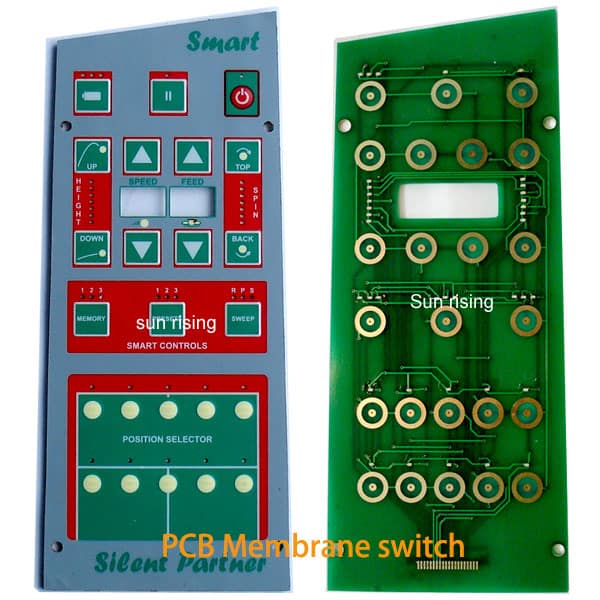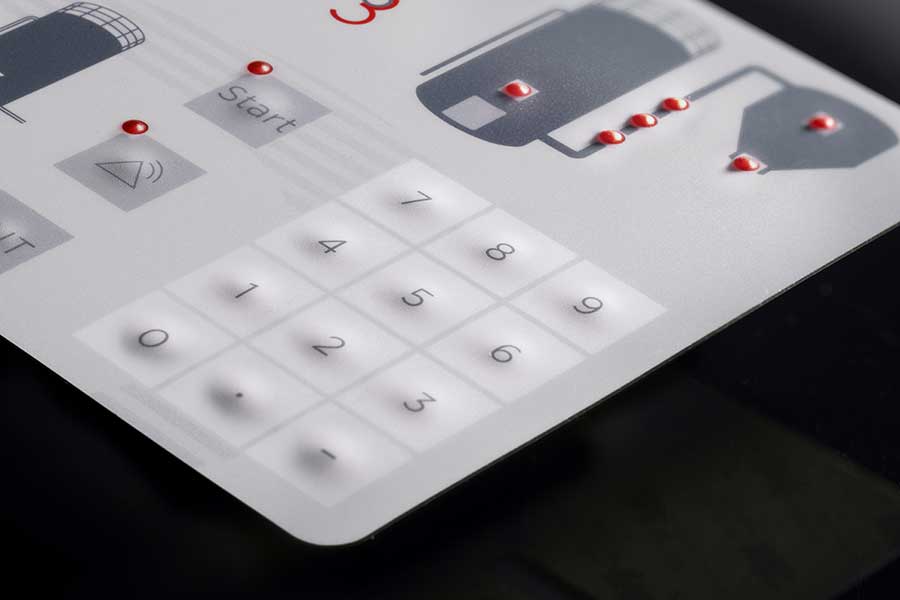How Membrane Switches Are Used to Boost Safety and Functionality in Industrial Equipment
How Membrane Switches Are Used to Boost Safety and Functionality in Industrial Equipment
Blog Article
Membrane Layer Switch Over Innovation: The Secret to Reliable and Affordable Interfaces
Membrane button modern technology has actually become an essential component in the layout of interface, supplying both integrity and cost-effectiveness throughout a varied range of applications. Its durable construction guarantees resistance to ecological difficulties, while the versatility in design enables for tailored services that fulfill details market requirements. As we explore the multifaceted benefits of membrane layer switches, their potential for technology raises concerns about future applications and evolving trends. What does the next phase hold for this modern technology in a progressively digital landscape?
Understanding Membrane Switch Over Technology
Membrane switch innovation is a commonly utilized interface solution in numerous electronic devices, offering a smooth mix of performance and design. This modern technology incorporates numerous layers of products, typically including a graphic overlay, spacer layer, and a circuit layer. The graphic overlay shows the user interface components, while the spacer layer divides the circuit layer from the overlay until a user triggers a button.
When pressure is put on the overlay, the circuit layer completes the electrical circuit, sending a signal to the device. This mechanism enables different configurations, including tactile comments and backlighting alternatives, enhancing user interaction. Membrane buttons are generally produced making use of long lasting materials such as polyester or polycarbonate, making sure long life and resistance to environmental aspects like dampness and dirt.
The convenience of membrane switches allows their application in diverse markets, consisting of clinical gadgets, customer electronic devices, and industrial controls. Their small layout enables assimilation into space-constrained environments, offering an efficient interface without jeopardizing aesthetic appeal. Comprehending the complexities of membrane switch innovation is necessary for producers and developers looking for to produce reliable and reliable human-machine user interfaces.
Secret Benefits of Membrane Switches
While various interface remedies exist, membrane layer switches over offer distinct benefits that make them a preferred option in various applications. One of the key advantages is their durability; membrane layer switches are developed to endure harsh environmental conditions, consisting of wetness, dirt, and temperature fluctuations, ensuring lasting performance. This strength substantially minimizes the need for regular substitutes, thus lowering total upkeep expenses.

Furthermore, membrane buttons are light-weight and portable, making them suitable for applications where area is limited. Their low-profile layout adds to a sleek appearance without endangering functionality.
Cost-effectiveness is additionally a noteworthy advantage, as the manufacturing process for membrane changes tends to be much less expensive contrasted to standard mechanical buttons. This price, integrated with their dependability and simplicity of setup, placements membrane layer changes as a functional option for a large range of industries looking for efficient and effective user interfaces.
Applications Across Various Industries
Just how do membrane switches adapt to the varied needs of different industries? Membrane layer switch innovation is increasingly identified for its versatility, making it suitable for a vast variety of applications throughout multiple fields.
In consumer electronics, membrane buttons offer a small option for push-button controls and home appliances, improving customer experience through instinctive layout. Furthermore, the industrial market leverages Check Out Your URL membrane switches for equipment control panels, profiting from their resistance to extreme environments, such as dampness and dirt.
Armed forces and aerospace applications additionally use check my reference membrane switches for their integrity and ability to stand up to severe problems, guaranteeing operational effectiveness in critical circumstances. Additionally, the food and beverage market takes on these switches for automated systems, where cleanliness and convenience of procedure are paramount. Ultimately, membrane switches are tailored to meet the special needs of each sector, confirming their essential role in modern innovation user interfaces
Layout and Personalization Options

In the realm of membrane button technology, layout and personalization choices play an essential function in boosting performance and user communication. These buttons can be tailored to satisfy details functional requirements and visual preferences, making them versatile components in various applications.
One of the key personalization choices is the format of the switch itself, which can be developed to fit unique individual interfaces and ergonomic considerations. By readjusting the form, dimension, and plan of switches, makers can create instinctive designs that facilitate convenience of use. Furthermore, the unification of different colors and graphic overlays permits branding and improved visibility, ensuring that individuals can swiftly identify features.
In addition, membrane switches can be view it now engineered with various tactile comments mechanisms, such as raised switches or distinct clicks, to improve the user experience. Different materials can also be selected for toughness and ecological resistance, attending to variables such as wetness, temperature changes, and chemical direct exposure.
Eventually, the considerable design and customization options available in membrane switch modern technology encourage companies to create tailored remedies that not just satisfy functional requirements but additionally line up with their branding and operational requirements.

Future Fads in Membrane Buttons
As membrane switch modern technology continues to develop, future patterns are increasingly concentrated on enhancing user experience and incorporating advanced performances. One significant pattern is the integration of touch-sensitive and capacitive technologies right into traditional membrane layer buttons. This development permits for more user-friendly interface, supplying tactile responses while maintaining a streamlined design.
Another emerging trend is using eco-friendly products, driven by the growing demand for lasting manufacturing practices. Suppliers are looking for to lower their carbon footprint by using recyclable substratums and low-impact inks, lining up with worldwide sustainability objectives.
Furthermore, the rise of the Internet of Points (IoT) is prompting the consolidation of clever features into membrane layer buttons. Improved connectivity choices will allow tools to interact with each other, enabling smooth combination right into more comprehensive systems.
Additionally, developments in printing modern technologies, such as digital printing, are permitting greater layout versatility and modification. This makes it possible for manufacturers to produce detailed layouts and lively shades cost-effectively.

Final Thought
To conclude, membrane layer switch modern technology represents an important technology in interface design, providing significant benefits in sturdiness, personalization, and cost-effectiveness. Its extensive applicability across varied markets underscores its relevance in modern innovation. As advancements remain to emerge, specifically in touch-sensitive user interfaces and lasting materials, the possibility for membrane switches over to boost user experience and performance remains encouraging. Proceeded exploration of this innovation will likely produce additionally renovations and expand its extent in future applications.
Report this page